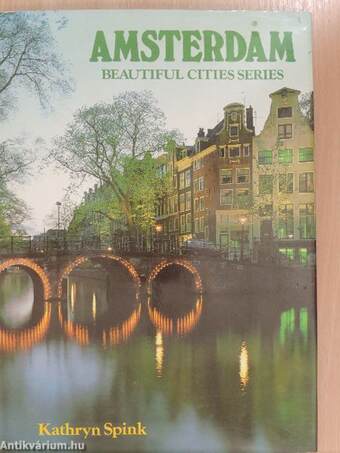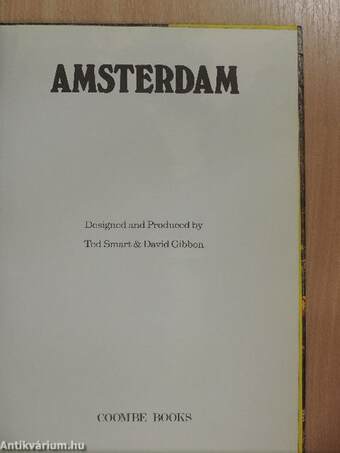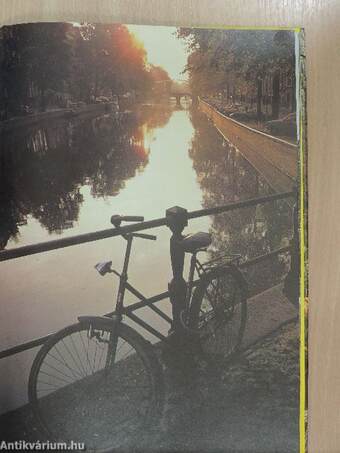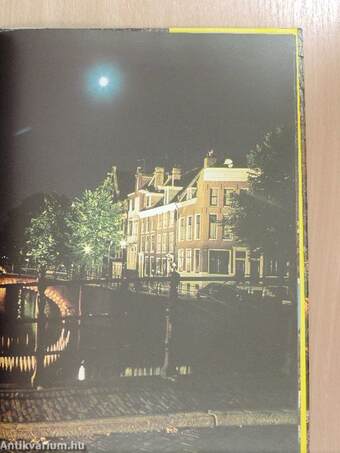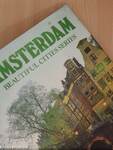1.067.209
kiadvánnyal nyújtjuk Magyarország legnagyobb antikvár könyv-kínálatát

VISSZA
A TETEJÉRE
JAVASLATOKÉszre-
vételek
Amsterdam
| Kiadó: | Colour Library Books Ltd. |
|---|---|
| Kiadás helye: | |
| Kiadás éve: | |
| Kötés típusa: | Fűzött kemény papírkötés |
| Oldalszám: | 92 oldal |
| Sorozatcím: | Combe Books-Beautiful cities |
| Kötetszám: | |
| Nyelv: | Angol |
| Méret: | 33 cm x 23 cm |
| ISBN: | 0-86283-530-8 |
| Megjegyzés: | Színes fotókkal. |
naponta értesítjük a beérkező friss
kiadványokról
naponta értesítjük a beérkező friss
kiadványokról
Fülszöveg
Il
fi
Originally a medieval fishing village,
nestling beside a dam across the River
Amstel, by the seventeenth century
Amsterdam had already become a major
trading centre for merchant ships from
all over the world. It was at this time that,
with the construction of three great
concentric canals, part of a network of
waterways that enabled freight to be
transported by barge to all parts of the
city, the still externally medieval town
developed into a large city. Today
Amsterdam holds more than 750,000
people within its eighty square miles but
the old city centre has changed little in
the course of three centuries. Amsterdam
is now as it was then a city of tall façades
overlooking rippling waterways, of
narrow backstreets, bustling street
markets and brightly coloured flowers.
Rembrandt would have little difficulty
in recognising the city in which he spent
the last 37 years of his life. The house in
which he lived for many years, 'though
now a museum, still... Tovább
Fülszöveg
Il
fi
Originally a medieval fishing village,
nestling beside a dam across the River
Amstel, by the seventeenth century
Amsterdam had already become a major
trading centre for merchant ships from
all over the world. It was at this time that,
with the construction of three great
concentric canals, part of a network of
waterways that enabled freight to be
transported by barge to all parts of the
city, the still externally medieval town
developed into a large city. Today
Amsterdam holds more than 750,000
people within its eighty square miles but
the old city centre has changed little in
the course of three centuries. Amsterdam
is now as it was then a city of tall façades
overlooking rippling waterways, of
narrow backstreets, bustling street
markets and brightly coloured flowers.
Rembrandt would have little difficulty
in recognising the city in which he spent
the last 37 years of his life. The house in
which he lived for many years, 'though
now a museum, still stands unchanged.
The rows of stately houses balanced by
their reflections in the shifting waters of
the canals, the formal lines of gables
softened by avenues of elm and linden
trees, the church towers soaring
heavenwards from the low-lying city
the inspiration of so many artists in
Amsterdam's glory years have altered
little with the passage of time.
Despite its many ancient buildings
however, Amsterdam is not merely an
architectural museum. Many canalside
houses, former homes of rich burghers,
are now occupied by the international
corporations and stockbroking firms
which make the city the fourth largest
financial centre of the world. The famous
17th century Mint Tower, built on the ruins
of a medieval keep, now presides over a
congested traffic intersection, and the
canals throb with the life of a mixed
community of artists and artisans,
bourgeois and bohemians.
The façades of the city centre hide all
the trappings of a bustling twentieth
century Metropolis. As the superb colour
photographs of this book admirably
illustrate, Amsterdam provides the best of
two worlds.
>v.
af Vissza
Témakörök
- Idegennyelv > Idegennyelvű könyvek > Angol > Művészetek > Fotóművészet
- Idegennyelv > Idegennyelvű könyvek > Angol > Helytörténet
- Helytörténet > Külföldi > Városok
- Művészetek > Fotóművészet > Albumok > Külföldi
- Művészetek > Fotóművészet > Albumok > Tematikus
- Művészetek > Fotóművészet > Idegen nyelv > Angol
- Művészetek > Fotóművészet > Témái > Városok > Külföldi



